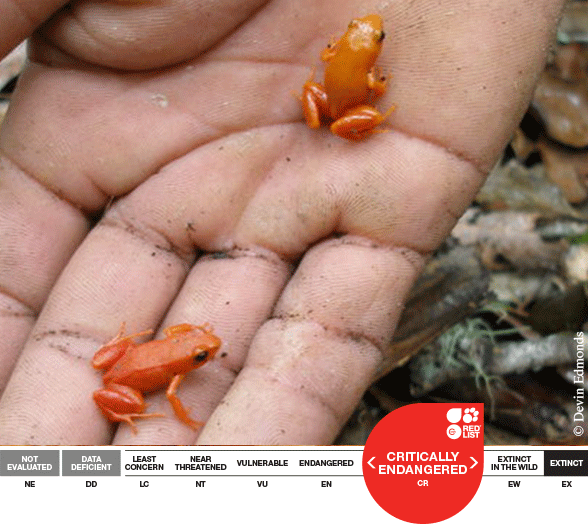
The Golden Mantella Frog, Mantella aurantiaca, is listed as ‘Critically Endangered’ on the IUCN Red List of Threatened Species. This species has a very restricted distribution in high altitude swamps of east-central Madagascar. It is often associated with screw pine forests. The female lays eggs on the ground and the rain washes them into ponds or swamps where they develop. The Golden Mantella ranges in color from yellow, orange, to red, with a length of up to 31 mm. Males have white femoral glands on the undersides of their thighs. Like poison dart frogs, the Golden Mantella retains toxins from the insects they eat so that they themselves are toxic too.
The main threat to the Golden Mantella is habitat destruction and fragmentation. Much of the land surrounding its preferred habitat has been modified by agriculture, timber, fire, and human developments. Golden Mantella is also collected for commercial sale, but this is not seen as a major threat to the species.
Current conservation actions have greatly reduced Golden Mantella trade for commercial use, and there is a proposed plan to enforce a trade quota that would reduce the impact on the already fragile habitat. Authorities should be encouraged to protect these Madagascan forests from further over-exploitation. Golden Mantella are currently present in 35 zoos where they successfully breed in captivity. Furthermore, in February 2012, the first in-country captive assurance population of the Golden Mantella was established at the Mitsinjo amphibian captive breeding facility in Andasibe, Madagascar. Captive-bred mantella are being screened for diseases and will be used to supplement populations of this species which have been translocated from a mine site to receptor sites in the surrounding conservation zone. This is the first project of its kind in Madagascar.
